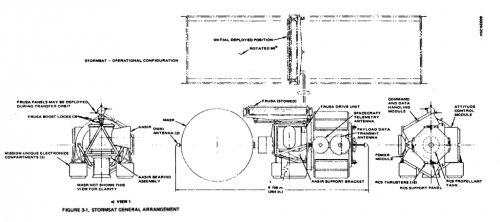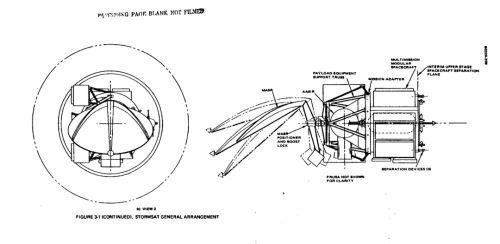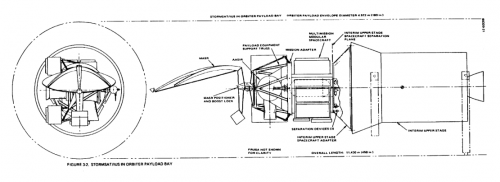- Joined
- 16 December 2010
- Messages
- 2,839
- Reaction score
- 2,083
Hughes designed geosynchronous satellite optimised to study mesoscale phenomena such as tornados, squall lines and large convective systems. Had the satellite been built, the launch vehicle would have either been a Delta rocket or the Space Shuttle.
Severe Storms Observing Satellite (STORMSAT), Final Report
The STORMSAT spacecraft and its primary sensors, the Advanced Atmospheric Sounding and Imaging Radiometer (AASIR) and Microwave Atmospheric Sounding Radiometer (MASR), will be used to provide the data base to enhance understanding of mesoscale weather phenomena, The primary data provided by STORMSAT will be visible images, infrared images,infrared temperature and humidity sounding, and microwave temperature and humidity sounding. These data will be processed into visible and infrared pictures, vertical temperature and humidity profiles, and possibly precipitation estimates. These data are currently being provided by a combination of polar orbiting and geostationary satellites, but not with the time and/or space resolution needed for mesoscale observation.
Severe Storms Observing Satellite (STORMSAT), Final Report



